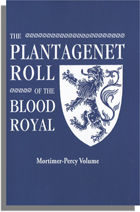
“Census Substitutes,” by the late Carolyn Barkley
This article originally appeared on our prior website/blog in March 2010. It is reprinted here with minor alterations.
In January of 2010, Ancestry.com announced to its subscribers the introduction of the “1950 Census Substitute” and urged us to “discover your parents, grandparents – – maybe even yourself.” Taken at face value, this announcement was pretty heady stuff. Following the link in the email, I discovered that the “1950 Census Substitute” provided access to city directory information from 2,500 United States city directories, the majority of which were published between 1948 and 1955. A companion collection, advertised as “1940 Census Substitute” contains more than 2,000 city directories. User comments were mixed. Some expressed concern that they could not locate a full list of the cities included in the collection. I was disappointed that my search of the “card catalog” function for “1950 Census Substitute” failed to yield the database. Finally, I discovered that if I did a keyword search for “census substitute” and then filtered it for the 1950s, I could find the “U. S. City Directory Collection,” but could not determine if this database was the same as the 1950 or 1940 city directory collections. Finally, I had difficulty searching for my father’s name in Taunton, Massachusetts. If I searched on his full name (first, middle initial, last) in Taunton, there were 15,073 responses to review. If I added the name of the street he lived on, the number of responses actually increased to 23,056. It was only after I added the full street address (1679 Somerset Avenue) that I found his directory listing in the fifth possible match offered. If I had not known the address, the search would have been frustrating and long.
[av_image src=’https://genealogical.com/wp-content/uploads/2018/11/questions-300×146.jpg’ attachment=’5658′ attachment_size=’medium’ align=’right’ styling=” hover=” link=” target=” caption=” font_size=” appearance=” overlay_opacity=’0.4′ overlay_color=’#000000′ overlay_text_color=’#ffffff’ animation=’no-animation’ av-mini-hide=’aviaTBav-mini-hide’ admin_preview_bg=” av_uid=’av-39gil1′][/av_image]
The foregoing experience prompted me to write about the range of census substitutes that are available. Census lists take many forms. Those with which we may be most familiar are the decennial federal censuses that began in 1790. Public access is currently available to these census enumerations beginning in 1790 and extending to 1930. The 1940 federal census is scheduled for release in 2012. As we know, however, not all federal censuses are extant for all states and all years.Nor is the extant data from the pre-1850 censuses terribly detailed. These limitations have prompted the publication of information drawn from other sources to either replace a missing decennial federal census or amplify them with lists of individuals and associated information compiled in intervening years and/or for differing purposes.
-
City Directories.
First, despite my comments above, let me be clear that city directory information can be very helpful. Published annually, the directories place an individual in a location at a given time and may also provide information about his or her occupation, name other individuals living at the same address, and even specify the ages of these individuals. City directory listings may differ from year to year and from publisher to publisher. For example, in some years, a wife’s name may be included, but not in others, for example. Such directory information, however, will be very helpful in tracing the movement of an individual into, around, and out of a city, and can indicate when children are students and when they reach the age of 21. I have found death dates listed in a city directory and this information then allowed me to search other resources to solve a research problem.
Directories, however, would not be my first choice to consult as a census substitute. City directory searches come with significant caveats. For example, a few years ago I researched the daughter of Confederate General J. E. B. Stuart who, after her marriage, lived in Norfolk, Virginia. In two consecutive Norfolk city directories I found the family living at two different addresses. Based on that information, I assumed that they had moved and began to look for the new address. Further research, however, revealed that the family had not moved at all. Instead, a reconfiguration of city streets compelled theirs to change names, although their residence remained at the same physical location. Consider also the recent case of a friend who, as a young unmarried woman, did not want her name in the directory. She supplied a fictitious name to the directory publisher, thus foiling future generations of researchers trying to locate her. Other problems require careful analysis. Individuals often supply information about their neighbors that may be inaccurate. The time lag between the collection of the data and the publication of the directory (usually one year, but perhaps as long as two) can compromise accuracy, too.
-
State censuses.
State censuses, while not substitutes in the traditional sense, are extremely helpful as they provide information about individuals between the long ten-year periods separating the federal censuses. These enumerations are available in print, on microfilm (although often unindexed), and more frequently, online. A good example of a pre-1790 state census can be found in North Carolina, whose General Assembly passed an act in 1784 calling for each county to “take a list of the number of white and black inhabitants and free citizens of every age, sex, and condition.” While imperfect, the resulting census is very helpful for individuals researching individuals living during this time period -in North Carolina. Extant state lists of Virginia heads of households for 1782, 1783, 1784 and 1785 were used to recreate the 1790 census enumeration, which was lost when the British burned Washington during the War of 1812.
Extant state censuses are listed and discussed in Ann S. Lainhart’s State Census Records (Genealogical Publishing Co., reprinted 2008). Another important resource for both state census records and census substitutes is William Dollarhide’s Census Substitutes & State Census Records (Family Roots Publishing Co., 2008). Volume 1 covers the eastern states, while Volume 2 discusses resources in western states. Dollarhide also prepared a special volume devoted to New York censuses and substitutes.
-
Special purpose lists.
Many government agencies at the state and local county level have taken counts of individuals, or censuses, for specific purposes. Information provided in such lists varies depending on the purpose for which they were created. Tax lists are one of the most prevalent of census substitutes. In Virginia, the tax lists for 1782-1787 were used to supplement the recreated 1790 census mentioned above(link #2000). Evarts B. Greene and Virginia D. Harrington published the best guide to pre-1790 censuses and special purpose lists entitled American Population Before the Federal Census of 1790.
School censuses list the number of male and female children and may also provide the name and age of students and the name of parents or guardians. Other lists may include voter registration lists; lists of settlers (such as the Holland Land Company [Western New York] or Georgia land lottery records); military pensioners (the Union veteran census is a substitute for the 1890 federal census); church membership lists; militia enlistment rolls; African American household censuses; Native American enumerations; land ownership maps; juror lists; and many more.
Census and substitute census enumerations help us locate an individual in a certain place at a certain time. You will want to remember, however, that the word “census” has no magic connotations. When a list includes “census” in its title don’t assume that the information is accurate. You will need to use your analytical skills to determine the accuracy of any information found in these sources. Consider the information critically. How does it compare to what you already know? Is it in conflict or does it corroborate your previous research? What was the purpose for which the information was collected? Who created or authorized the enumeration? Was your ancestor the informant? Has it been transcribed or abstracted? Careful consideration of these questions and others like them will allow you to use census substitutes effectively and in doing so, learn more about your ancestor and the world in which he or she lived.
Recent Blog Posts



